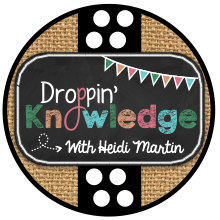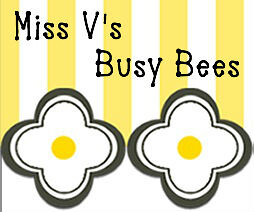
A hot topic on the Whole Brain Teaching website forum and blogs is Power Pix! What are they? How do I use them? Are they appropriate for all students?
Each year, my school district has grade level teams meet to create and organize curricular pacing plans for each area of study. These plans are developed to align curriculum with state standards, now to be labeled Core Standards. The pacing plans provide teachers a unified time table of instruction, using specific district approved materials. To ensure the continuity of instruction across the district, the plans include quarterly benchmark assessments, which later lead into mandated state testing in the spring.
My experience with pacing plans through the years is that they never allowed for the time needed to fully develop certain concepts. In addition, the time required to meet the remediation needs of certain students, based on different learning styles, was not included in that time frame either. So what's a teacher supposed to do? Enter Whole Brain Teaching and Power Pix!
Chris Biffle, a creator of Whole Brain Teaching, states, "A significiant quantity of modern brain research demonstrates that we learn best by seeing, saying, hearing and doing. When we see information, we employ the visual cortex near the rear of the brain; when we say and hear information, the language centers, Broca’s area and Wernicke’s area in the brain’s left hemisphere are active. When we engage in a physical learning activity we employ the motor cortex, our most reliable memory storage area, located in a band across the top, center of the brain" ("2nd Grade LA Power Pix" 4). Mr. Biffle goes on to say, "We want our students to see, say, hear and do … we want them to experience the joy and power of learning with their whole brains. Power Pix, as you will see, employ all four learning modes, and are designed to solve a very practical problem, how to teach the state standards in Math and Language Arts" ("2nd Grade LA Power Pix” 4).
 Using Power Pix in my classroom helps to ensure my students are not only learning and comprehending the state standards, they are also able to articulate them within the district guidelines for curriculum and the district pacing plan. I introduce the Pix in the order of the pacing plan, using the 5 Step Lesson Template (WBT Video Library). Then, instead of setting the Pix aside when we move into the next chapter or unit of study, they remain posted on a grid wall for daily review. No more having to say to your class, “Remember when we were learning about synonyms last October?” No, now it’s, “C7! What is a synonym?” The gesture and answers become automatic for all learners because of the visual, verbal, auditory, and physical participation by every student in the repetition of each Pix daily!
Using Power Pix in my classroom helps to ensure my students are not only learning and comprehending the state standards, they are also able to articulate them within the district guidelines for curriculum and the district pacing plan. I introduce the Pix in the order of the pacing plan, using the 5 Step Lesson Template (WBT Video Library). Then, instead of setting the Pix aside when we move into the next chapter or unit of study, they remain posted on a grid wall for daily review. No more having to say to your class, “Remember when we were learning about synonyms last October?” No, now it’s, “C7! What is a synonym?” The gesture and answers become automatic for all learners because of the visual, verbal, auditory, and physical participation by every student in the repetition of each Pix daily! 
When the school year begins, I have already set up a blue grid wall for Language Arts and a red grid wall for Math. These walls are initially empty of Pix. I start with two Pix from LA and two from Math. They are posted on my front white board and introduced using the 5 Step Lesson Template. (When you download the free Power Pix, you will find they even come with a script to help you!) The Pix stay on the front board until the majority of your class has grasped the concept. I usually allow one week. At this point, I have a duplicate, reduced size Pix ready to go on the grid wall. (I have to reduce the size because I have limited wall space, and I want to make sure the Pix stay visible for the year.)

The grid wall becomes a major cue system for recalling the standards. I make Power Pix practice a standard part of our daily morning routine. After I feel like the procedure for morning practice has become routine, I start choosing two student leaders each day to go up and call out the grid info. These students will each choose a Pix from the Math and one from the LA. For example, “B2!” The class responds back, “B2!” The student leader and the class will then recite together the Pix question with a gesture and the answer. Repeat this procedure for each of the choices the student leaders have picked that morning. Because the Pix stay visible to the class all day, they can easily be used for small group or individual instruction and review as needed.
There is no limit to how you can incorporate the Power Pix into that pacing plan! Now when you come to that state testing period, and have to cover up or remove any instructional materials from view, your students will be ready! Step back and enjoy the view of your students gesturing as they work through the test! Teacher Heaven!!.
The Power Pix are a free Ebook download at the WBT site. They have been made for K-3, but many are appropriate for other grade levels. Check the WBT forum for teachers who are currently constructing templates to create their own Power Pix.





























7 comments:
Thank you for the great post, Nancy! I was hoping we'd get to Power Pix at the conference, but we were too busy with everything else! I am going to go check out the Power Pix download!
Kate
EduKate and Inspire
Stop by my 100 follower giveaway!
Thank you! I'm new to WBT and your post answered my question about how to post Power Pix--shrink or not to shrink? Shrink! :)
Grade Three is the Place for Me!
Hi Janis! I had to shrink due to wall space! At least the "shrink" set takes less ink and paper. Keep me posted on your WBT progress!
I have a real basic question. To "shrink" the power pix, did you just print more frames per page? Thanks
When I print the second smaller set, I put 4 Pix to a page. Some people choose to put 2 on a page, but that would have been too big for my space.
Thanks so much for your great post! I am new to WBT this year, so I have my fingers crossed! I linked to your site from my blog (http://wbtforme.blogspot.com) since you have a great description of power pix! Thanks!
How about Science and Social Studies. We are required to have word walls for all subjects. This picture and information power pix would be great for all subjects!
Post a Comment